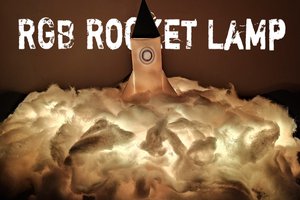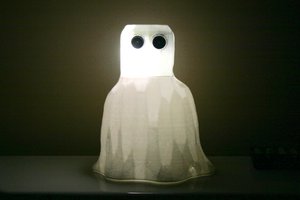According to the nameplate, the fireplace was manufactured by Whittaker Fireplaces of Windsor, Ontario, Canada.
Note: This model of fireplace uses asbestos sheets for insulation in several places. I'm informed that containment is sufficient for remediation in these parts. I'm using duct tape to seal up any asbestos I find.
The Teardown
Perhaps 'teardown' is too strong a word; I don't need to disturb the old mechanism, the top glass plate lifts out so I can photograph the insides.
The fireplace is a cast iron frame with decorative (brass? bronze?) posts. Tinted glass plates are located behind a front grille and across the top to let the light out; a number of brown-tinted, glassy rocks are placed on the top glass to emulate 'coals'.
Heat is provided by a coil of resistance wire (110v, 30A), and deflected out into the room by a curved plate. The top glass plate can be removed to replace the two incandescent bulbs used to create the 'flames'.
When I opened up the fireplace, I saw two assemblies I mistook for cooling fans, positioned over two incandescent bulbs. Closer examination revealed their actual purpose; they are tiny windmills, rotating on tiny metal points above the incandescent bulbs. Rising hot air from the bulbs rotates the windmills, and the extended vanes provide moving shadows that flicker on the glass to mimic 'flames'.
Going Forward
My plan is to use red, orange and yellow LED's to create a low-power flickering light source, using an Arduino to turn strings of LED's on and off at random intervals.
I'll need to experiment to find a realistic-looking combination of LED colors.
This is very much a junkbox project; dozens of the LED array PCBs were donated to my local makerspace (shoutout to Techworks!), along with bagfuls of LEDs. They're used for the Soldering 101 workshops we put on. The arrays are attached to a piece of perfboard; 5 arrays light the glass top with the 'coals', and 4 light the glass front. On/off blinking and PWM brightness control is provided by the Arduino Pro Mini in the lower right corner of the photo.
I'll upload a short video when I've got it all assembled.
Future Enhancements
1) I may decide to tweak the timing to make it more realistic. The blinking is a bit too abrupt in spots, some arrays need a more gradual fading. The 'coals' are quite convincing, but the front glass has had the tint scraped off in places.
2) Something like this just BEGS to have remote on/off! Maybe an IR input from my TV remote, or an ESP8266, or ...

 vishal soni
vishal soni

 Steve Pomeroy
Steve Pomeroy
 Mike Rigsby
Mike Rigsby